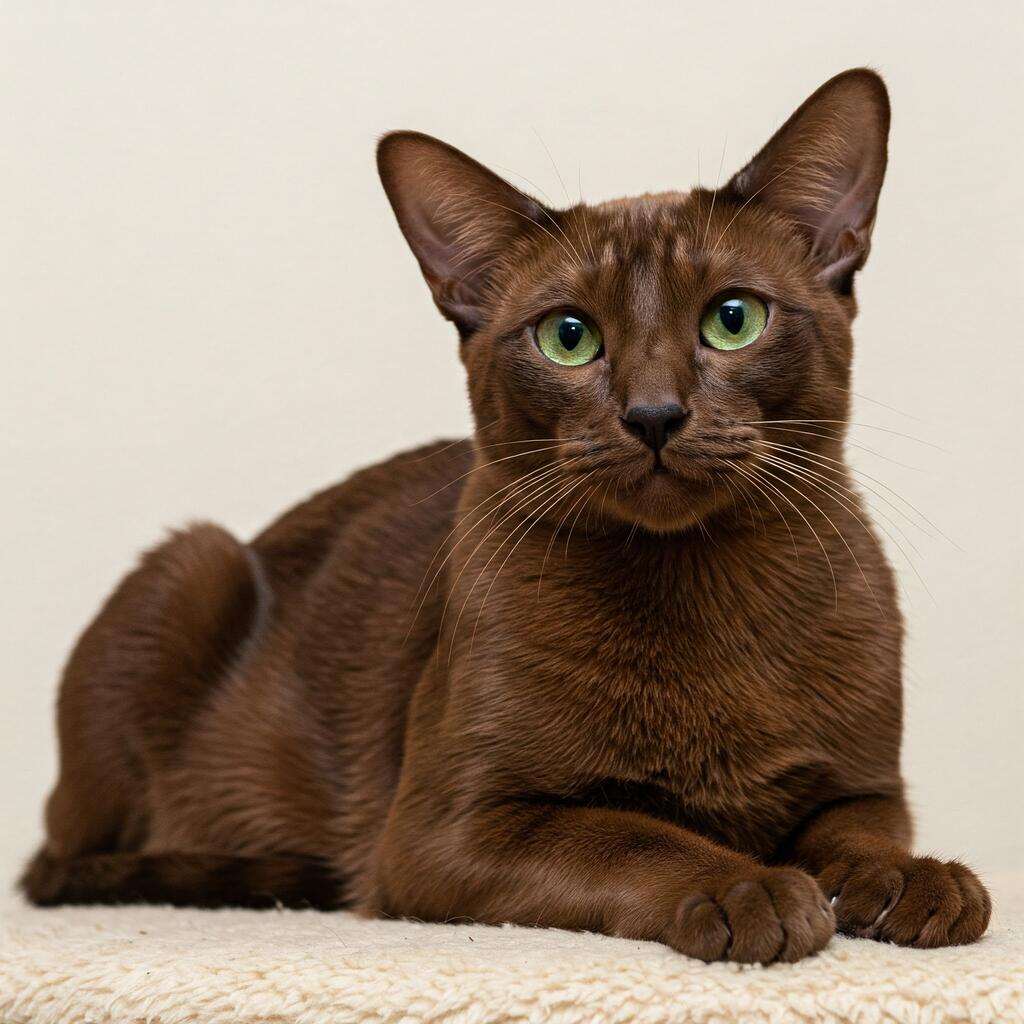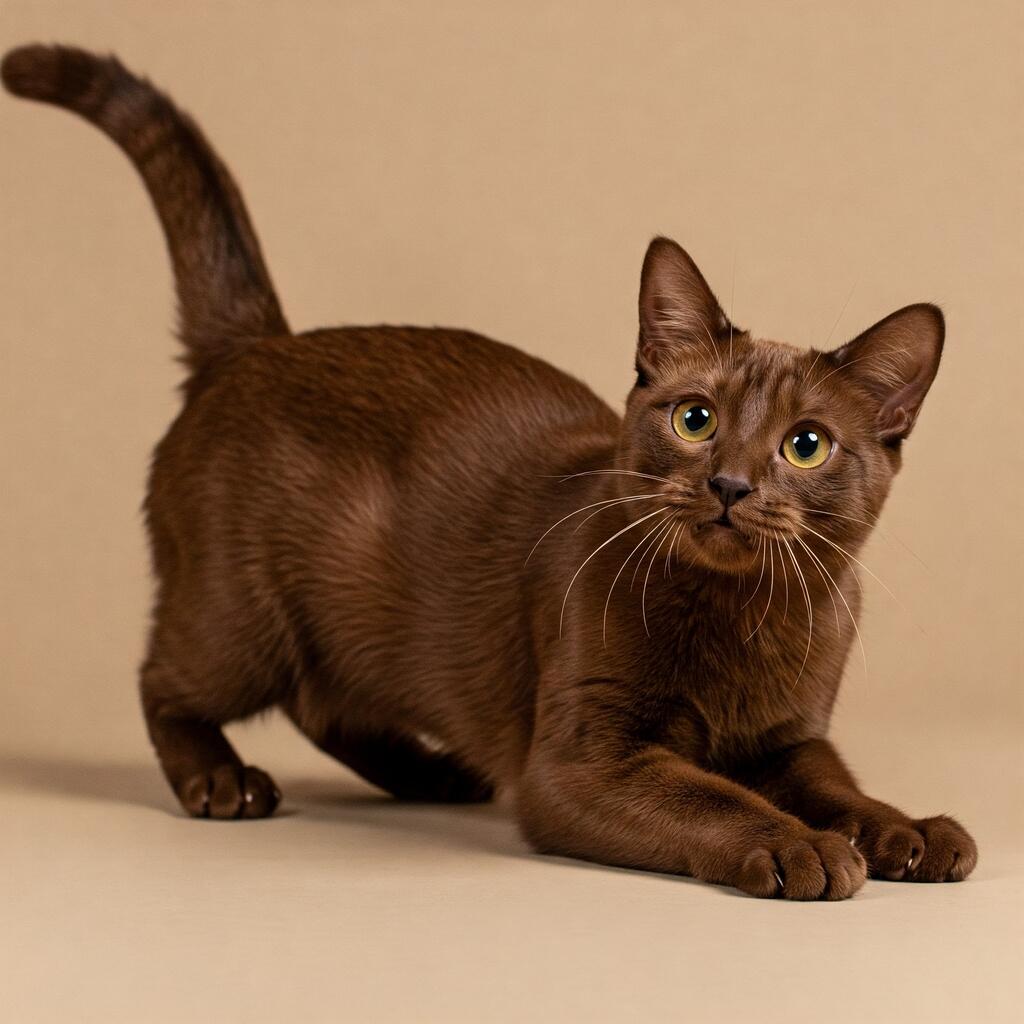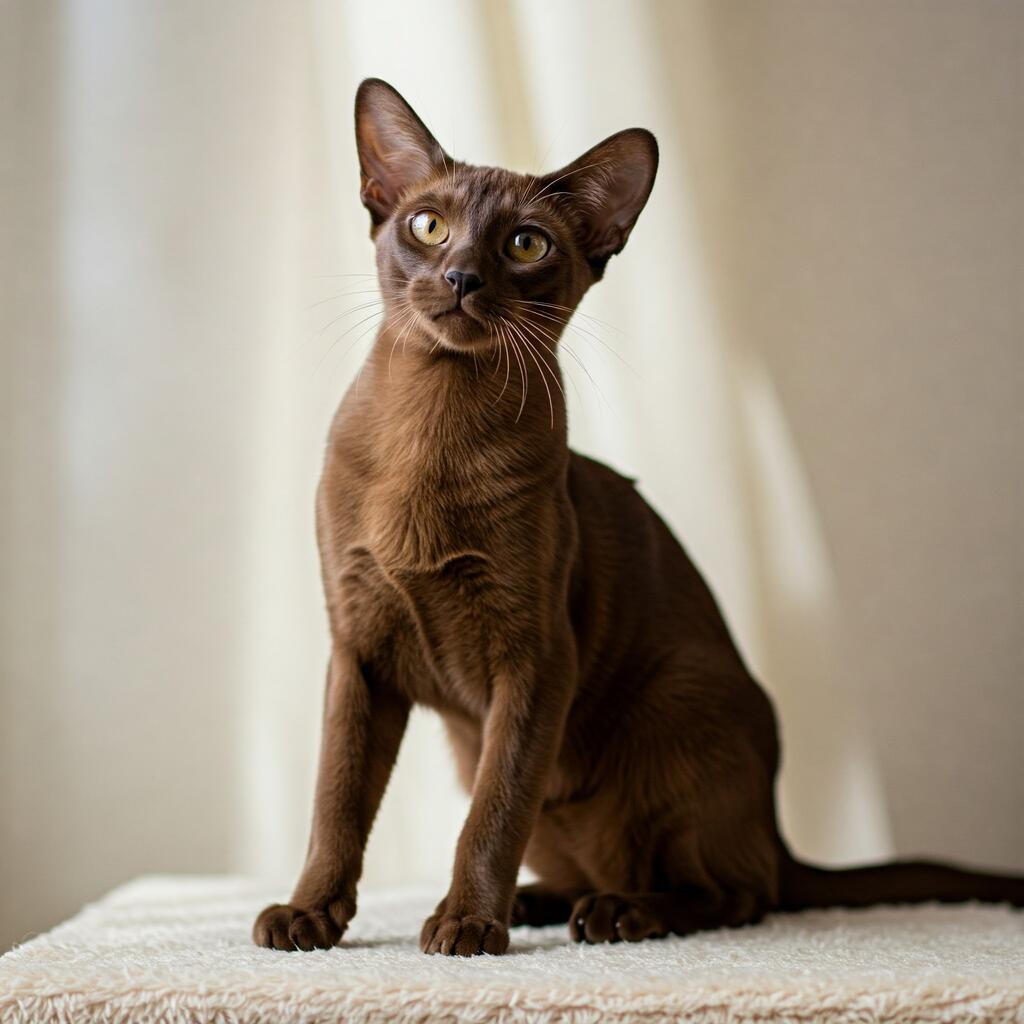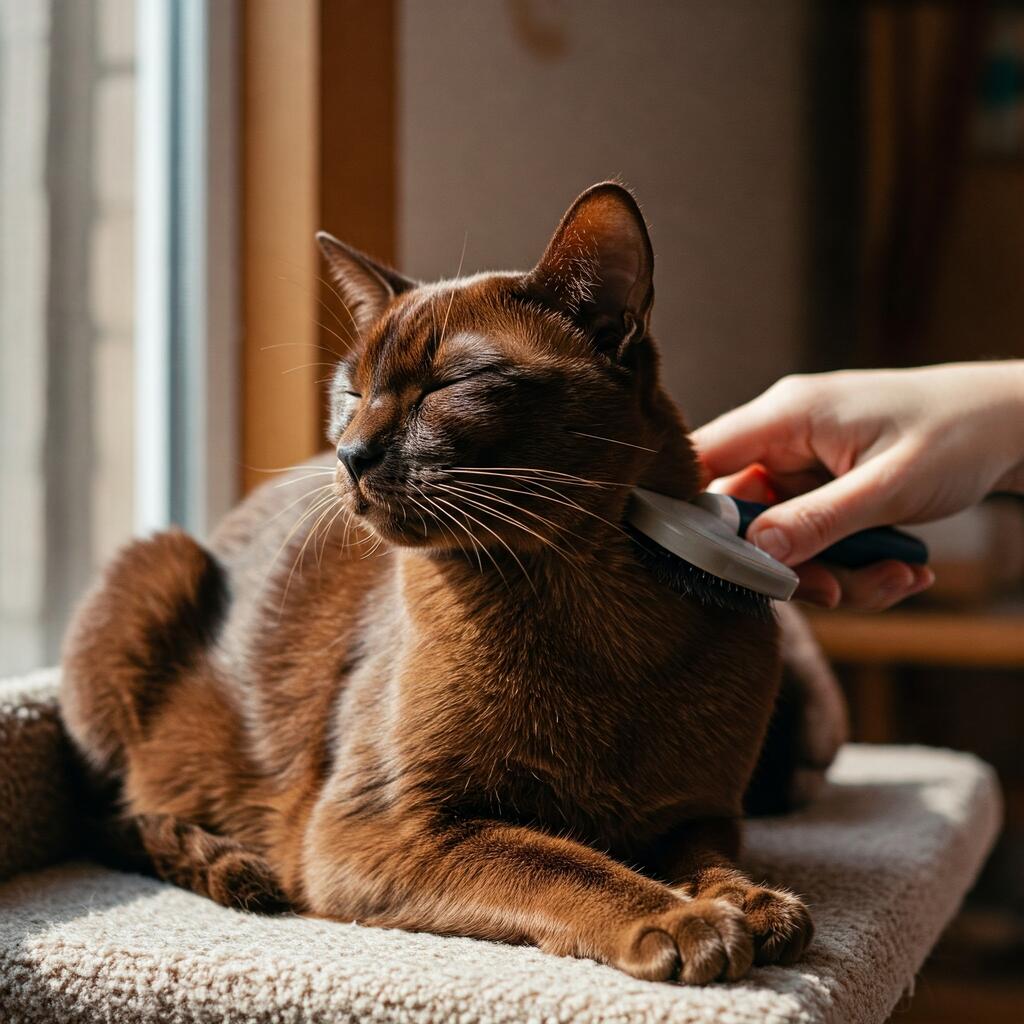
Havana Brown Cats: Sophisticated & Affectionate
The Havana Brown Cat has somewhat obscure origins. Its ancestors are said to have come from Siam, today's Thailand, where it is said to have been widespread in antiquity and indeed even today specimens of this breed, brown with beautiful green eyes, are almost revered. In the 19th century, it was imported to Europe where it was very successful at feline shows, but at the beginning of the 20th century, the Siamese Cat Club decided to accept only blue-eyed cats in competitions, so our green-eyed specimen was almost completely forgotten.
It was only after the Second World War that interest in this cat was rekindled and after several attempts at mating with other breeds such as Siamese, Russian Blues, Black Persians, around 1952, news of the first cat of this breed, born in England, became known. It was a beautiful kitten with a short chocolate-coloured coat and was called Elmtower Bronze Idol, ancestor of all the Havana Browns that are still born today.
Brought also to America, these cats have however undergone changes and therefore we have two distinct breeds although very similar, the English breed is a chocolate coloured Siamese with short hair with the characteristics of an oriental cat, while the American is more like a Russian Blue, although it still looks very much like a Siamese. Today, unfortunately, this breed is very rare. Its name, Havana, seems to come from the colour of the Havana cigar, which is the same as the colour of this cat's coat, but some say that it comes from a breed of rabbit that has a very similar coat and is called Havana.
Character of the Havana Brown Cat

He is a very active and curious animal, looking and sniffing everywhere. He gets along well with other cats and also with dogs. With children, he is very patient and enjoys playing with them. It suffers a little from the cold and therefore likes to stay indoors more in warm, comfortable places.
With strangers they need their time to accept them or not, they are rather shy and timid at first. Thanks to their intelligence they can also learn to go out on a leash, but they like being indoors more. They are also very suitable cats for elderly people as they need companionship above all, and it is enough to provide them with some toys that they can pass the time peacefully.
Appearance of the Havana Brown Cat

The head is long and wedge-shaped rather than broad and with a very long nose, it has wide, well spaced and pointed ears. The eyes are very beautiful, almond-shaped and green in colour. The eyes are in fact the most striking feature of this cat, a very intense green, which stands out in strong contrast to the colour of its coat.
It has long and muscular paws, the hind ones longer than the fore ones. Its tail is long and full, wider at the base.
The coat of the Havana Brown is medium-short, shiny and smooth and of a glossy dark brown colour, uniform over the whole body. The coat is almost devoid of undercoat, which is why it loses very little hair even during the moulting period.
Health and care of the Havana Brown Cat

As far as nutrition is concerned, this must be controlled as this cat is endowed with a robust appetite and would never stop eating with the danger of becoming obese.
As far as caring for its coat is concerned, a brushing once a week is sufficient and perhaps every now and then cleaning it with a chamois or flannel glove to keep it shiny and beautiful.






















